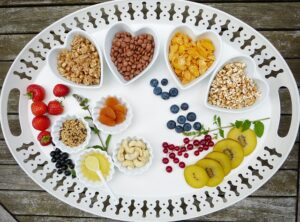Case Study: A Toddler’s Snack Struggles
Emma, a two-year-old, loved munching on crackers and fruit snacks throughout the day. Her mom, Lisa, always kept a stash of quick bites in her bag to keep Emma happy while running errands. However, Lisa soon noticed that Emma would barely touch her dinner, often refusing vegetables and protein-rich foods. Concerned, she consulted a pediatric nutritionist, who pointed out that frequent snacking was reducing Emma’s appetite for balanced meals. By adjusting snack times, choosing nutrient-dense foods, and setting a structured eating schedule, Lisa gradually helped Emma develop healthier eating habits.
Toddlers have small stomachs but high energy levels, making snacks an essential part of their daily diet. However, if snacks are not given properly, they may affect mealtime appetite, lead to picky eating, or create unhealthy eating habits. Parents should pay attention to these four key aspects when offering snacks to ensure their child receives balanced nutrition.
Avoid Using Snacks as a Quick Fix for Discomfort
Many parents carry snacks while out and about to soothe their child when they are fussy or restless. However, this practice may cause children to associate snacking with emotional comfort rather than actual hunger. Additionally, eating while walking or in the car can distract them from their food and increase the risk of choking.
Better Approach: Offer snacks only when your child is truly hungry and encourage eating in a designated area. When going out, bring simple and nutritious snacks like fruit, crushed nuts, or whole-grain crackers, but avoid letting them eat while playing or moving around.
Time Snacks Wisely to Avoid Ruining Mealtime
If a child eats too many snacks before a meal, even if they are healthy, they may not be hungry enough to eat a proper meal. Additionally, frequent snacking may make them prefer mild-flavored and easy-to-eat foods while rejecting nutrient-rich options like vegetables and proteins during meals.
Better Approach: Ensure there is a 2 to 3-hour gap between snacks and meals so your child arrives at the table with an appetite. If they feel hungry before a meal, offer a small portion of a healthy food, like carrot sticks or a bit of protein, instead of processed snacks.
Make Snacks a Nutritional Boost, Not a Special Treat
Many commercial toddler snacks are high in sugar, salt, and additives. While these may taste good, they often lack essential nutrients. If snacks consist mainly of sweet or highly processed foods, children may develop the idea that “snacks = treats” and start favoring them over nutritious meals.
Better Approach: Offer nutrient-dense snacks like fresh fruits, whole grains (oatmeal, brown rice crackers), and quality proteins (eggs, cheese, tofu). This way, snacks contribute to overall nutrition rather than serving as a mere indulgence.
Establish a Healthy Snacking Routine
Allowing children to snack whenever they want can lead to mindless eating and using food to cope with boredom. Over time, this can disrupt their natural hunger signals and encourage unhealthy eating habits.
Better Approach: Set regular snack times, such as once in the morning and once in the afternoon, to create a stable eating schedule. If your child asks for food outside of snack time, offer water first or engage them in another activity, like playing or reading, to help them differentiate between actual hunger and boredom.
Key Takeaways
Planning toddler snacks wisely helps provide essential nutrients while fostering healthy eating habits. By avoiding mindless snacking, spacing snacks appropriately between meals, offering nutritious choices, and setting a consistent schedule, parents can support their child's ability to recognize hunger cues and develop a balanced approach to eating.













